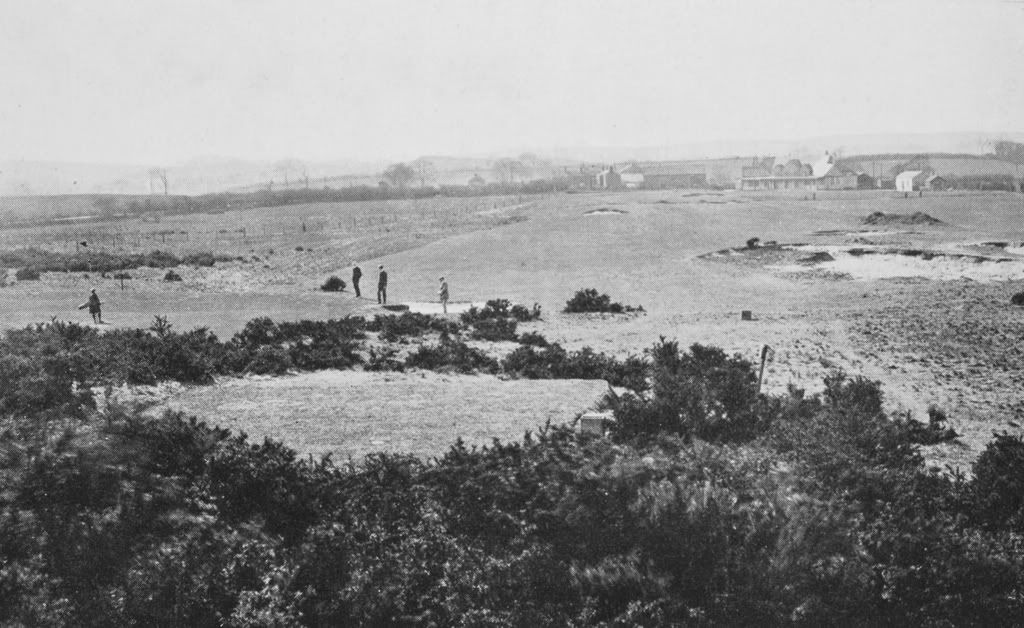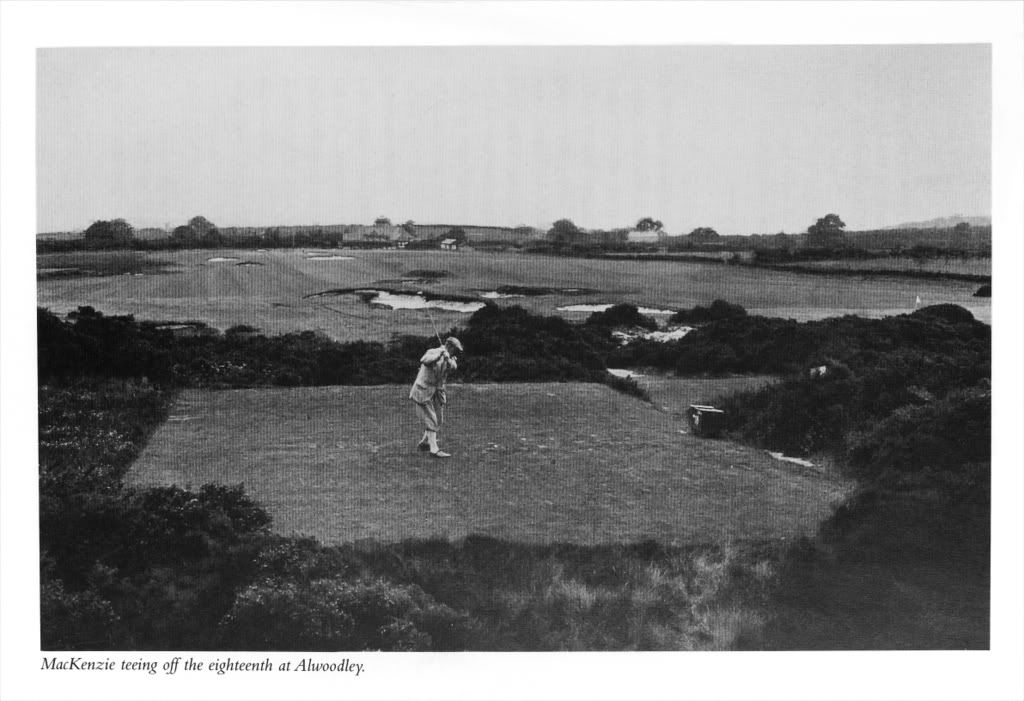It was my delight to write The Alwoodley Golf Club's Centenary Book. It's a lovely club with a super course and splendid clubhouse. Many of you have played it, so here are a few photographs:
1. 404 yards par 4. The presence of OOB on left causes many to drive too far right, from which it is hard to find the well-bunkered green. The bunker rear left is wicked. Third picture is MaceKenzie approaching the green.
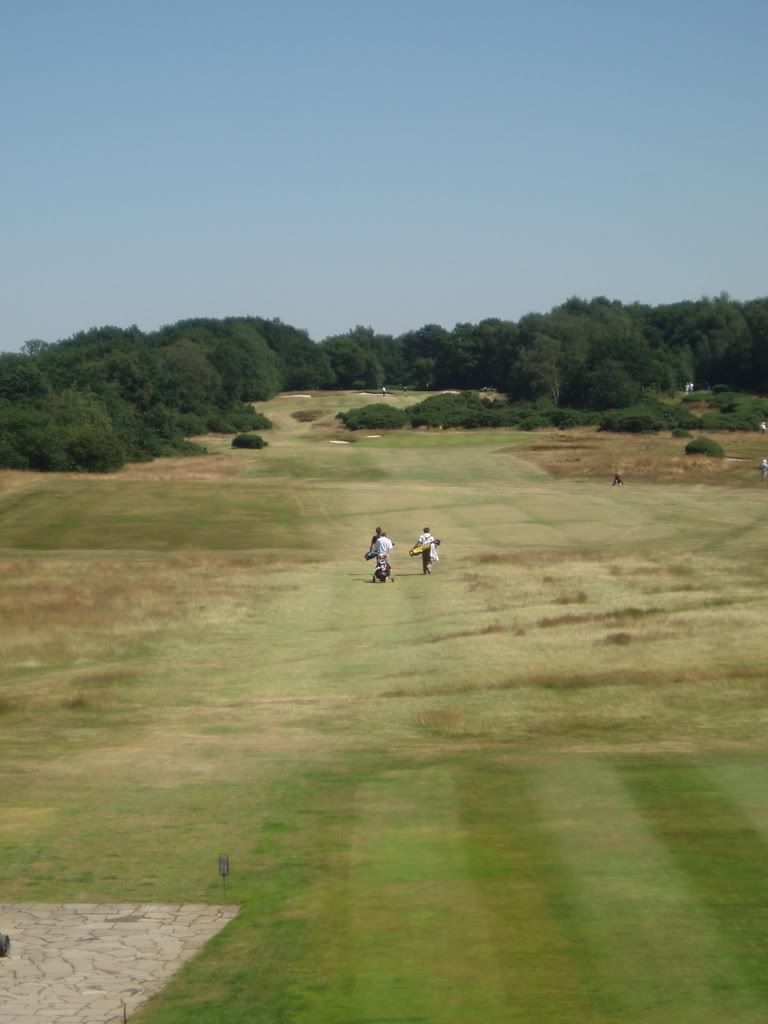
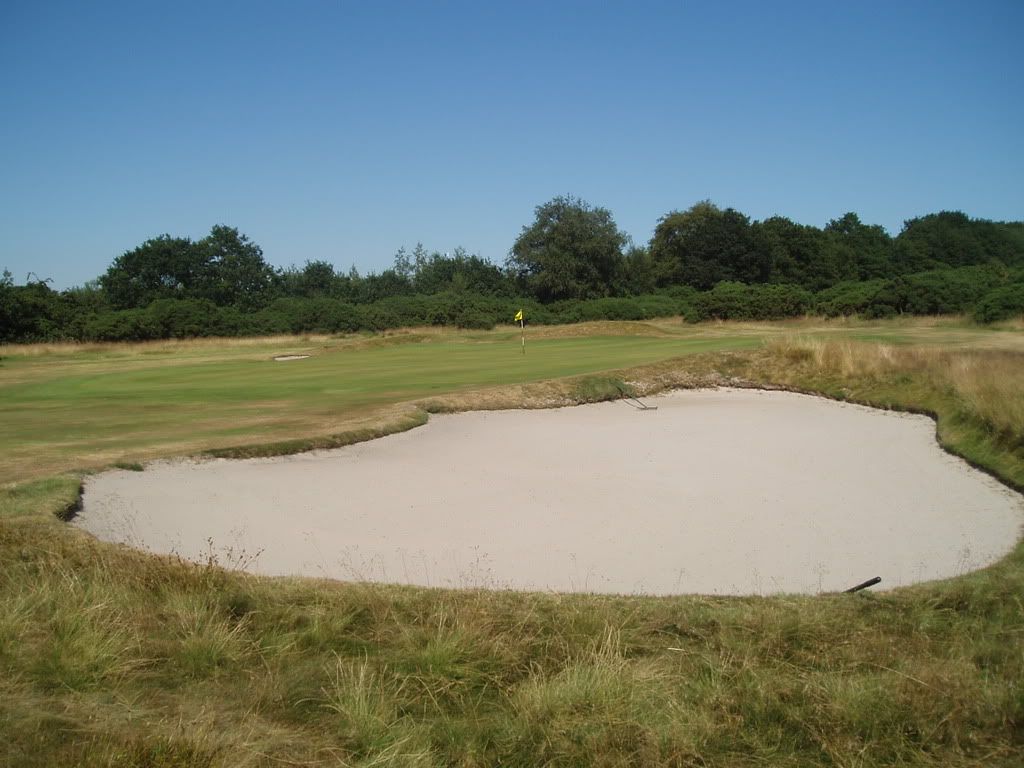

2. 305 yards par 4. You can see the hill up which this hole plays on the first photograph of the 1st. It can be driven, but the risks are too great to make it a sensible option.
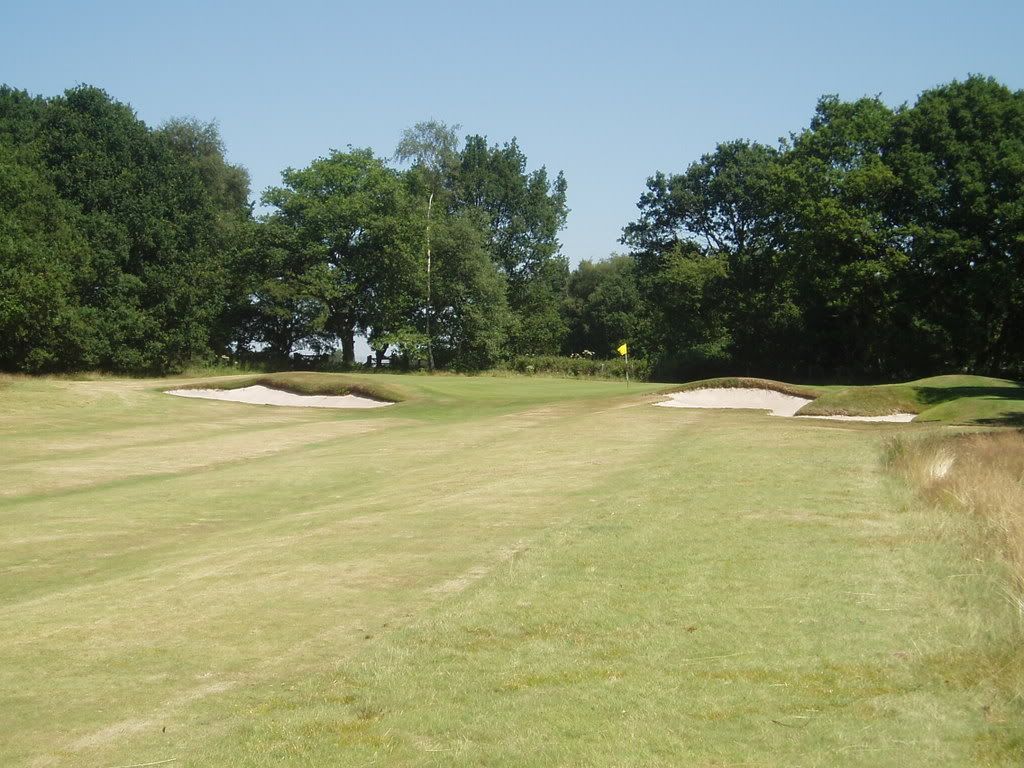
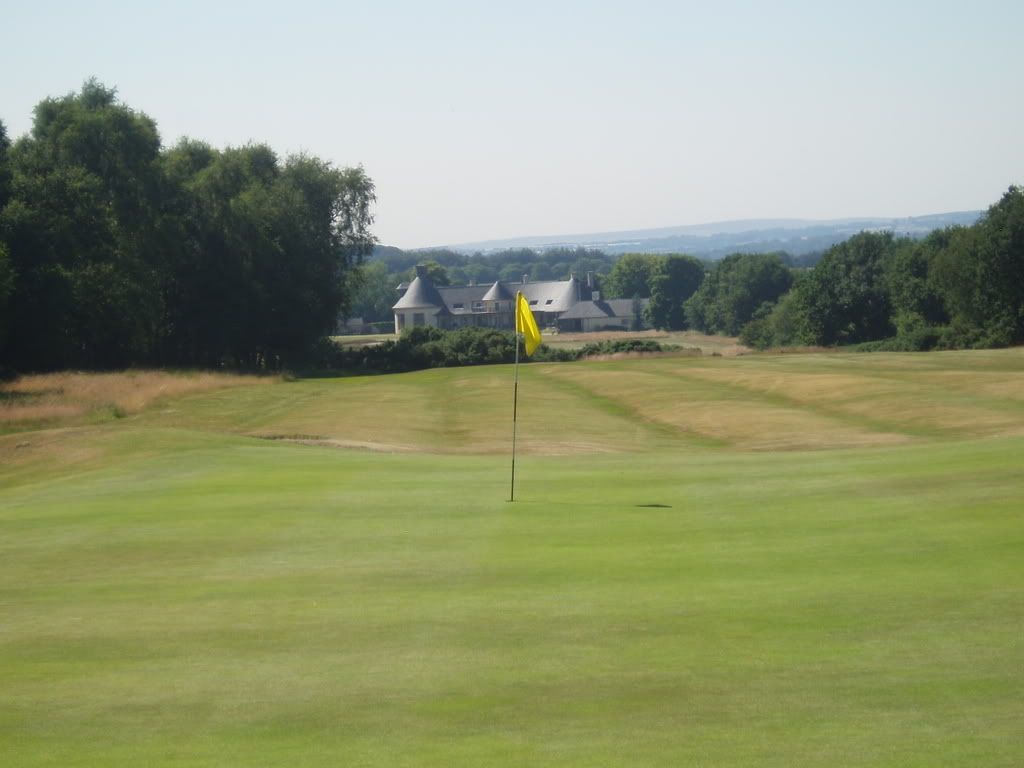
3. 514 yards par 5. Sorry, but it's the only picture I've got of this hole. It fails to show the drop to the lower level on the left of the green. I'm sure one of you has a better one. Please post!
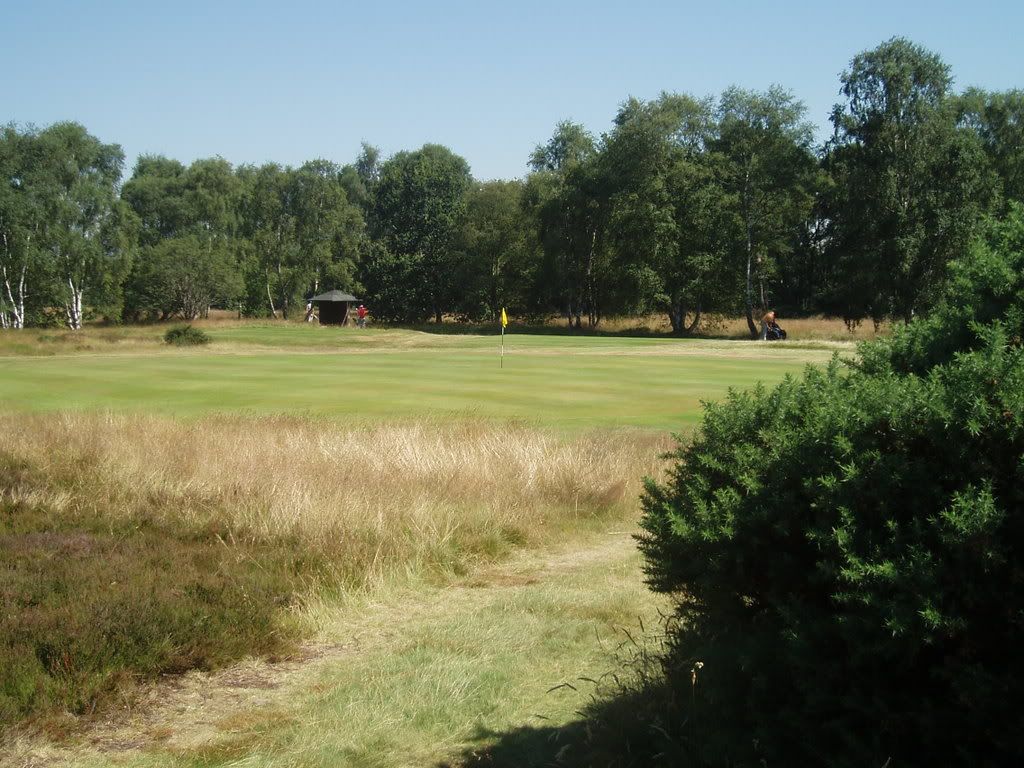
4. 478 yards par 4. A very tough par 4, usually played into the wind. An old 35mm picture, hence the graininess.
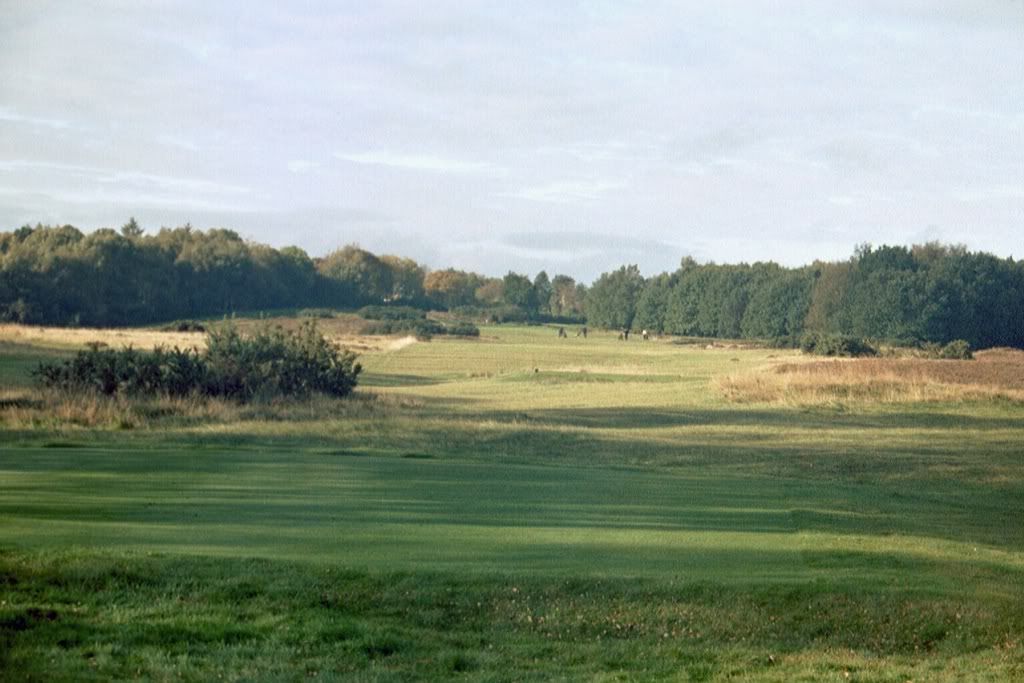
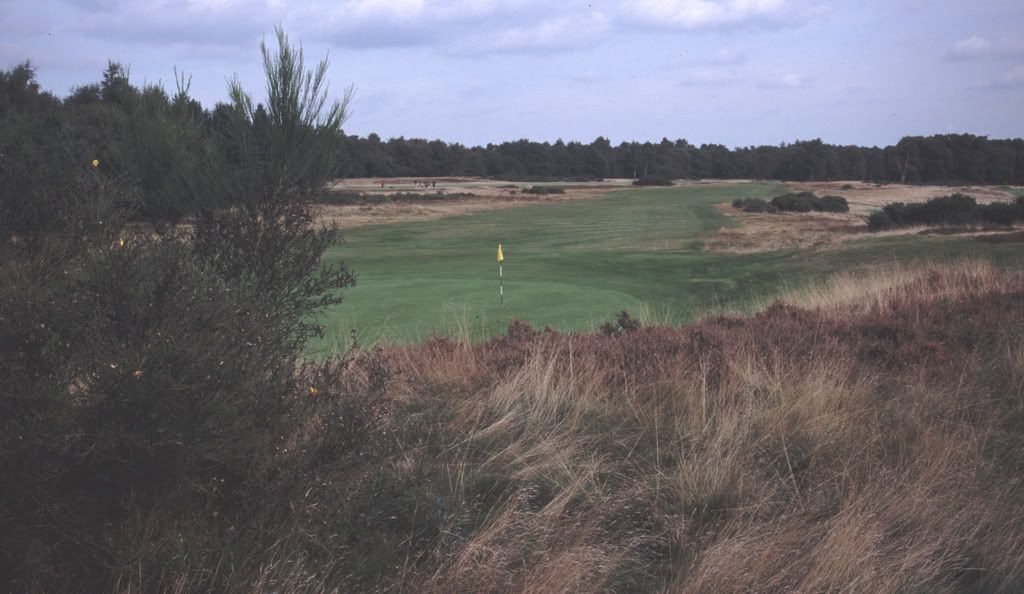
5. 369 yards par 4. A delightful hole, the drive needing to hold the left-to-right falling fairway, and the pitch over the bunkers from that right side is testing.
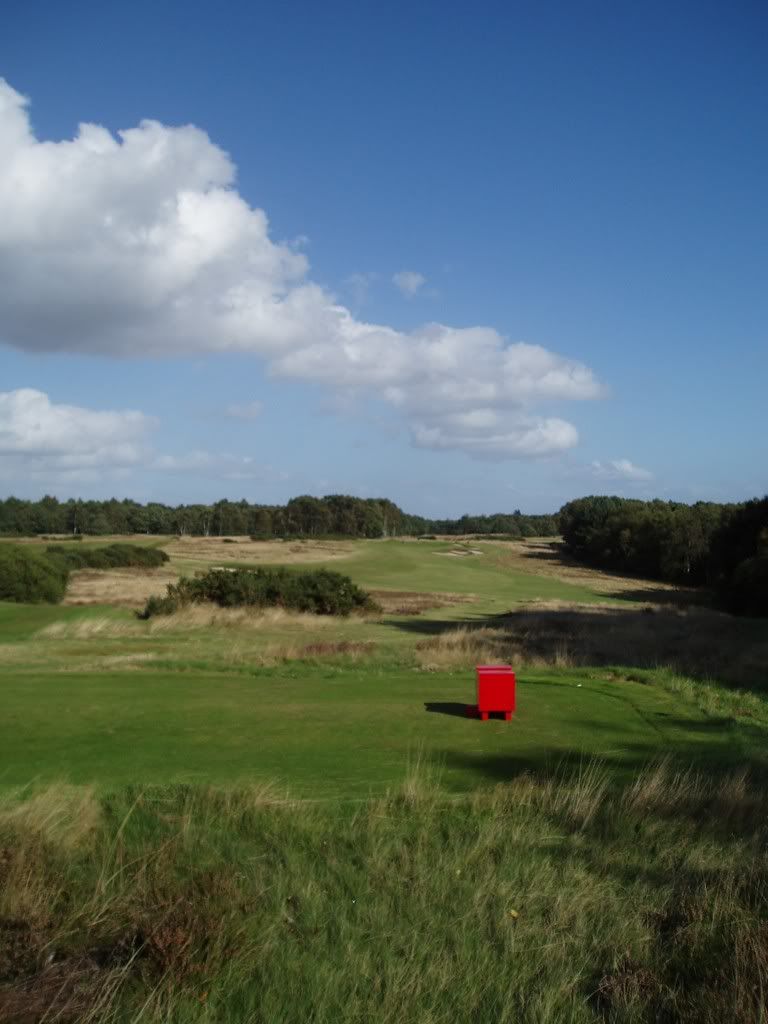
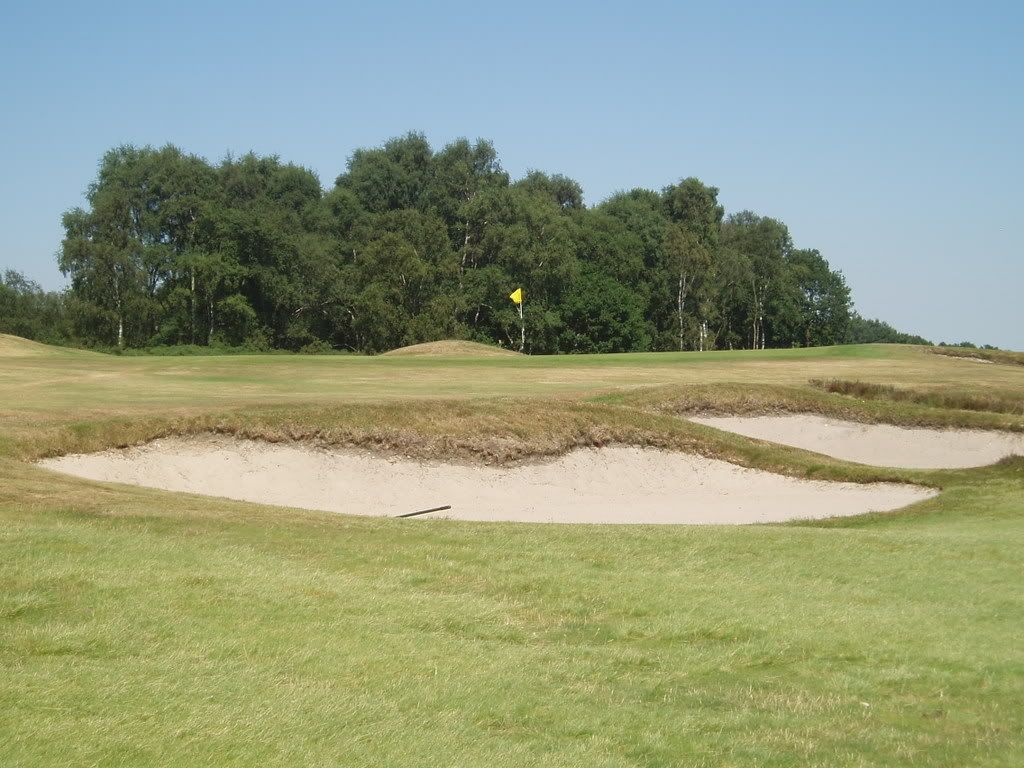
6. 455 yards par 4. A difficult driving hole from the back tee, with the fairway largely invisible (and impossible to photograph without a crane). While there is room on the right of the fairway, shooting straight for the green can be hazardous. This green is not a 1907 original. The hole was lengthened in MacKenzie's time.
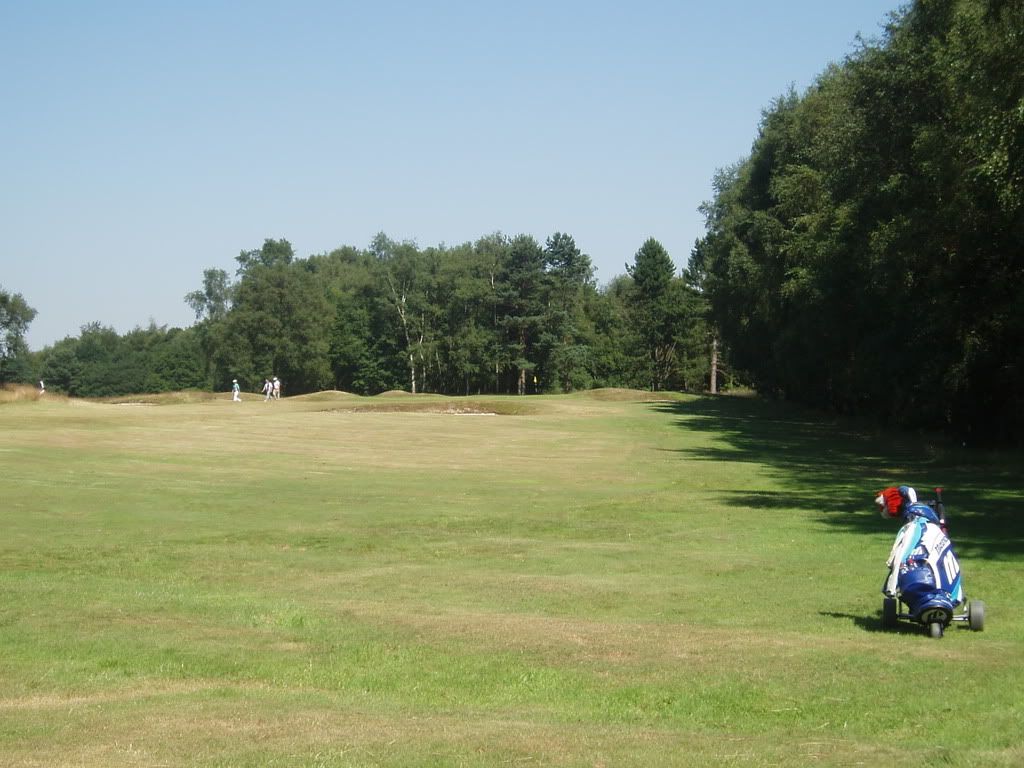
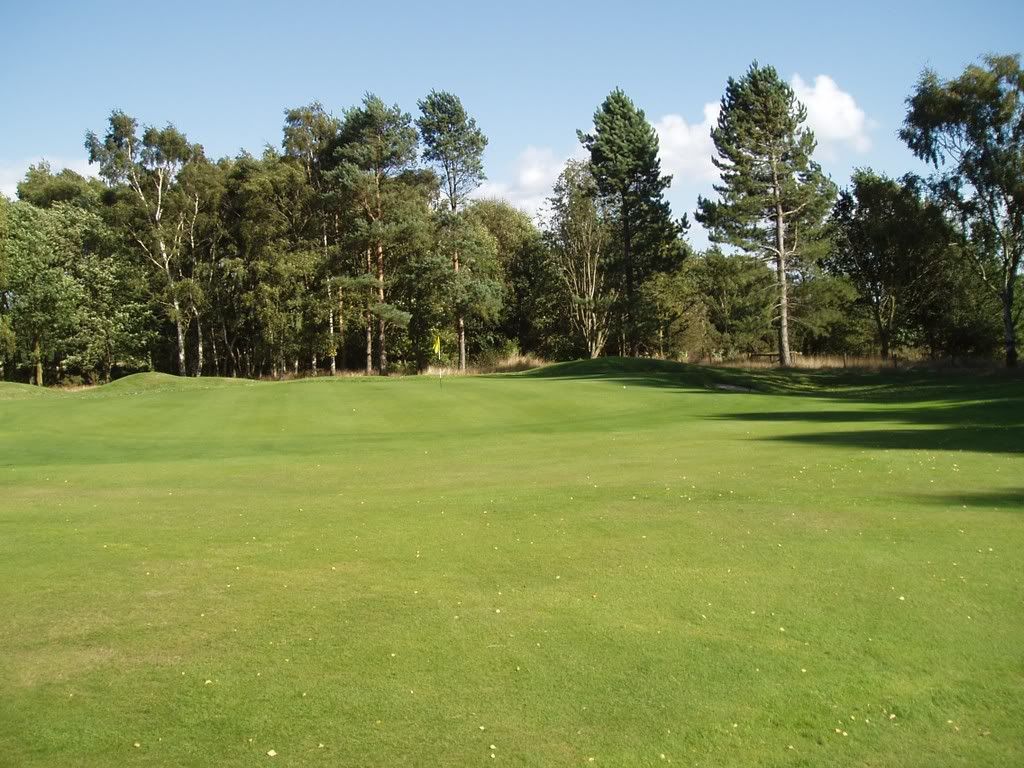
7. 143 yards par 3. A charming short hole. Old photographs show that the bunkering (style and positioning) was altered several times in MacKenzie's day.
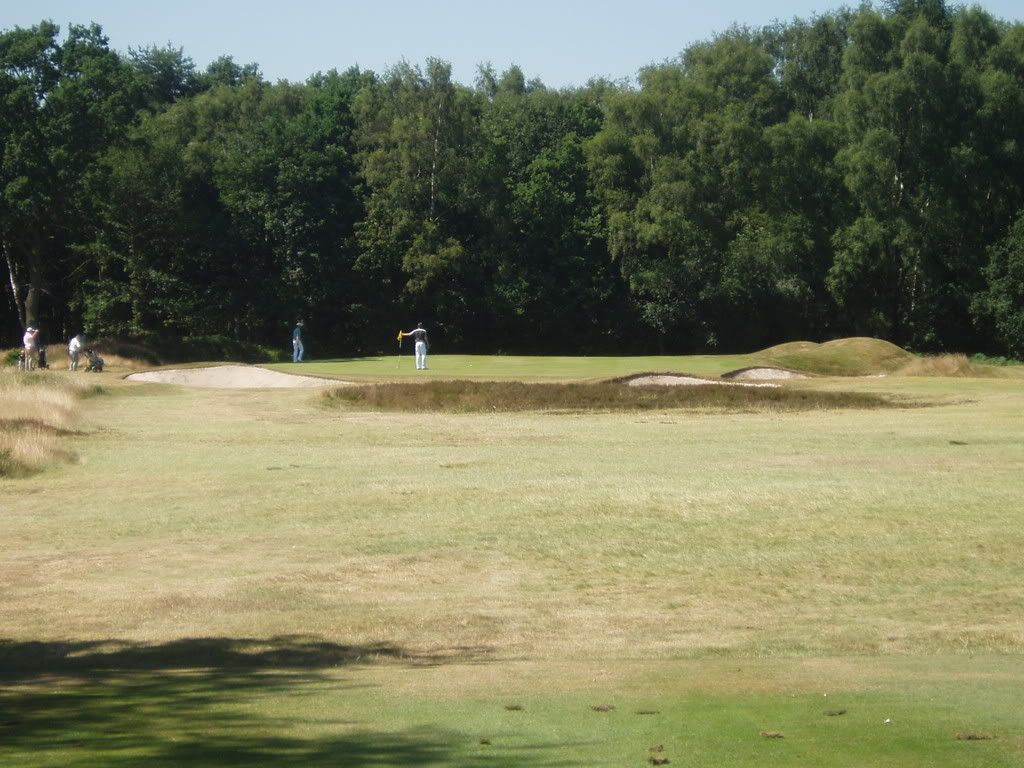
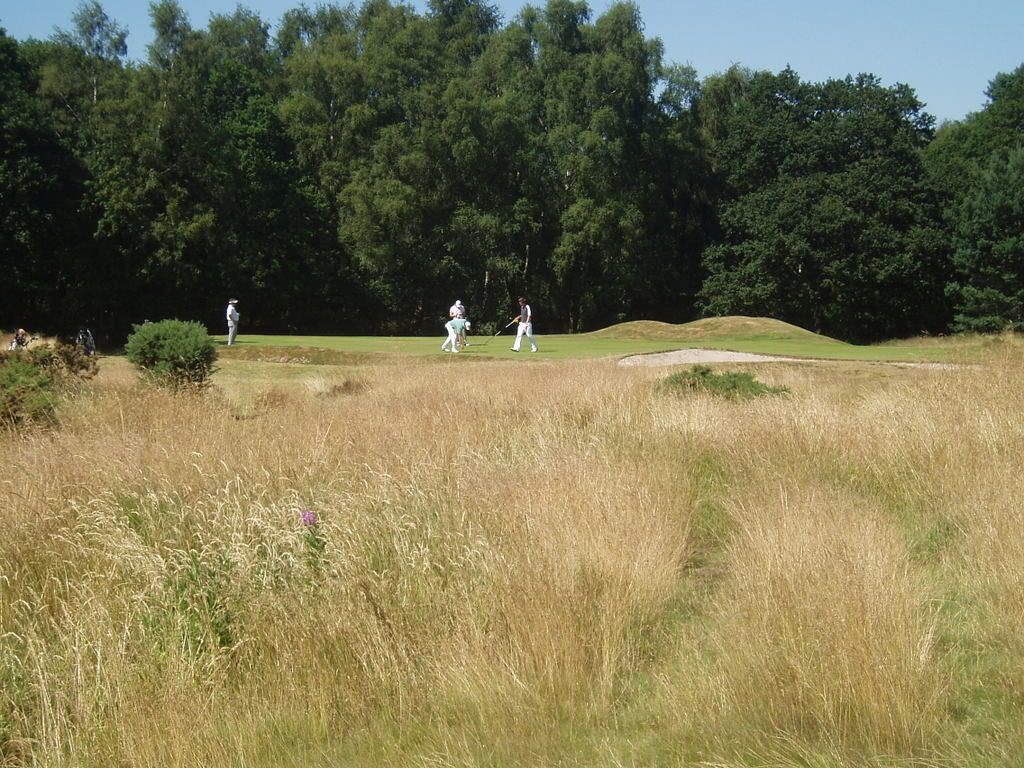
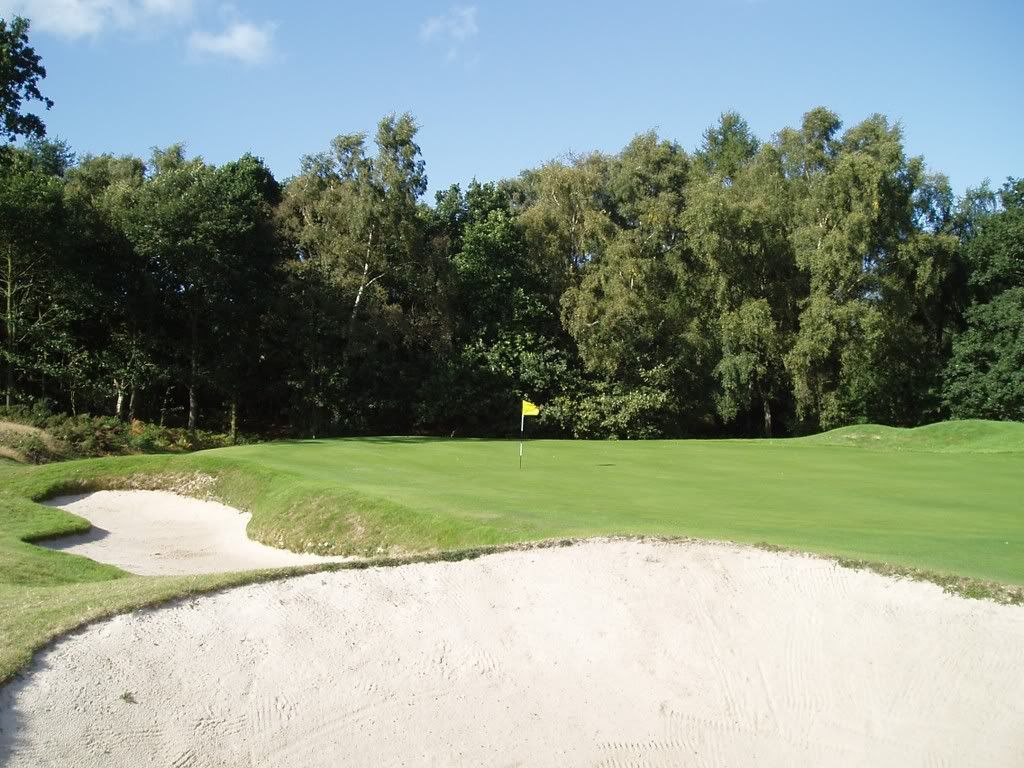
8. 584 yards par 5. John Green, the club's Professional (here seen playing from the back tee), points out that both par 5s are in reach of two shots with the prevailing wind, and that for a good player the course is harder when the wind is from the east. The drive must avoid trees to the left and for handicap golfers the second shot must not come to grief in the remnants of the once extensive cross bunker seen in the second picture. It stretched further, being a hazard on the 9th, too. The green rises towards the back and is angled across the line of a long second shot.

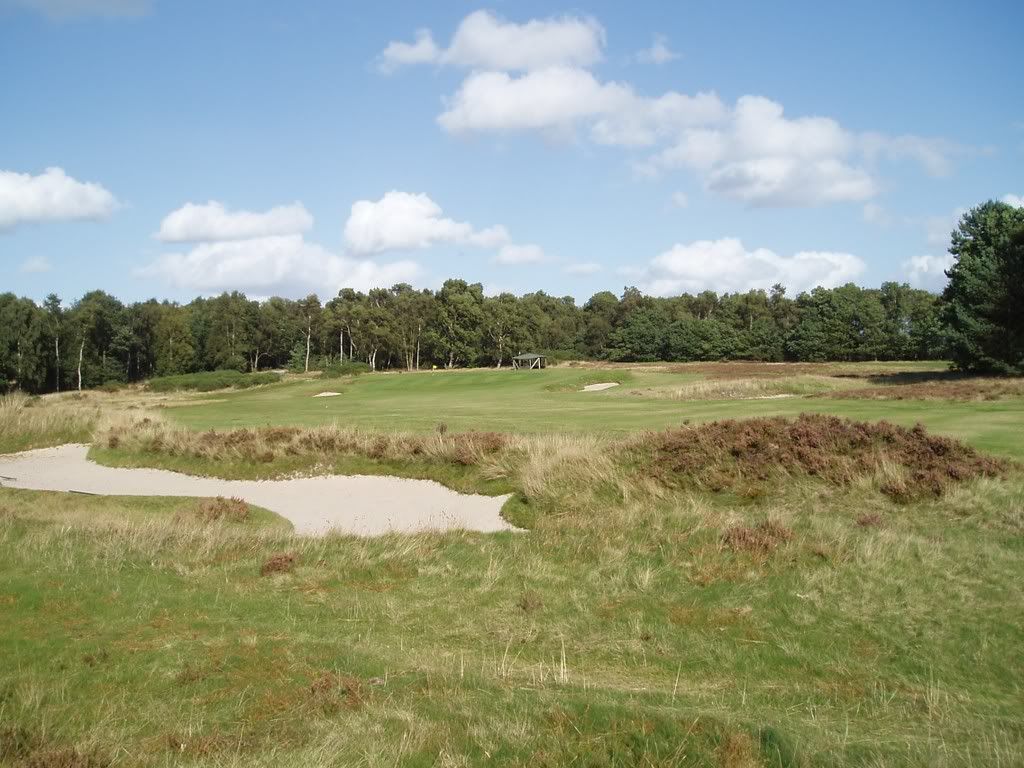
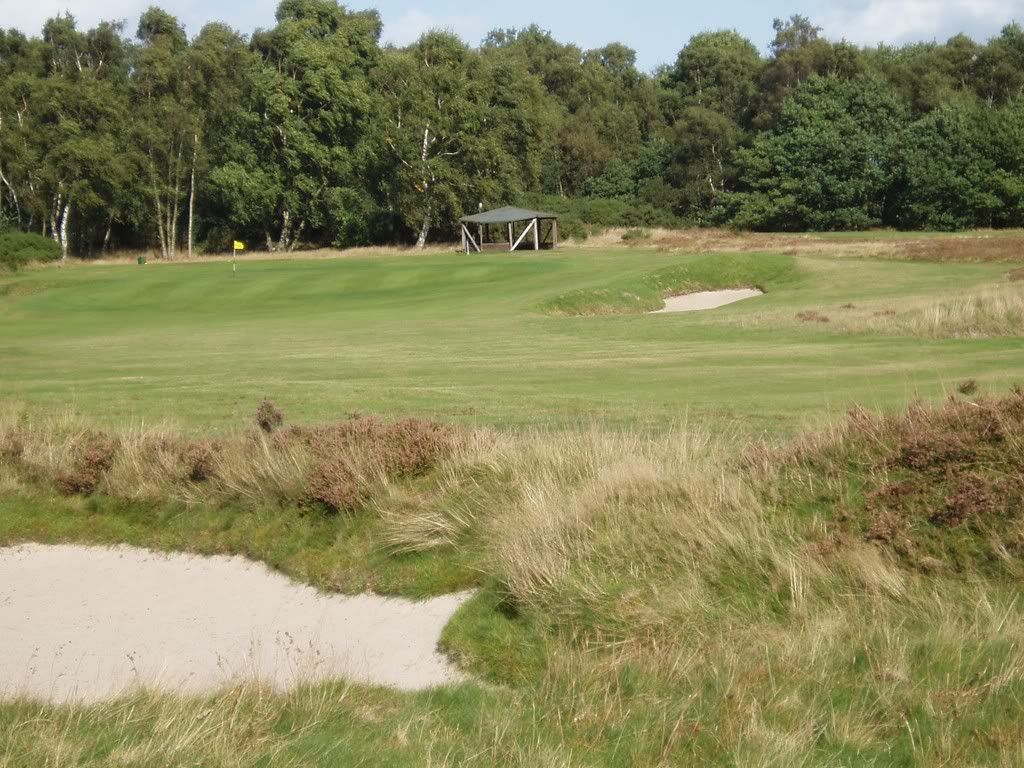
9. 191 yards par 3. Not a great photo of this lovely hole, played across low, rough ground to a green with many difficult pin positions around the edges. Usually into the wind, this hole can play surprisingly long.
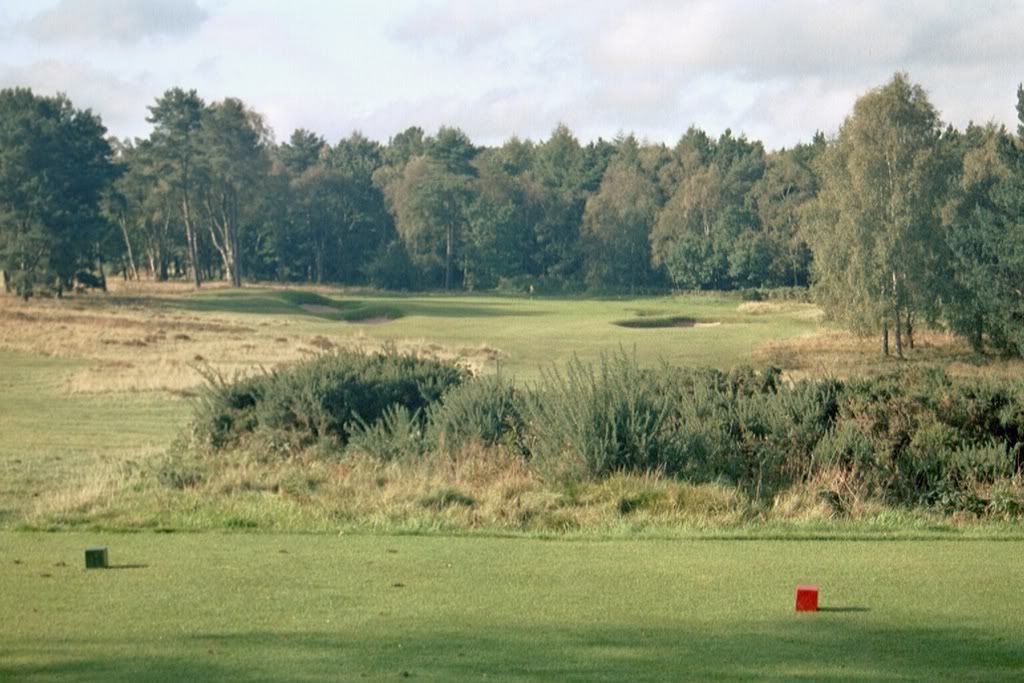
10. 475 yards par 5. A hole that in some ways resembles the 13th at ANGC. The club originally did not have access to the land where the green now stands, and the original green was level with the mound on the right. MacKenzie's sketch map of ca 1910 indicates that he would build a green where this one is if the land ever became available. When it did become available (1929) MacKenzie was no longer welcome at the club and it is doubtful that MacKenzie oversaw its construction. Its slopes are considerable and front left pin positions are treacherous. Ran Morrissett and Nick Leefe in the second picture.
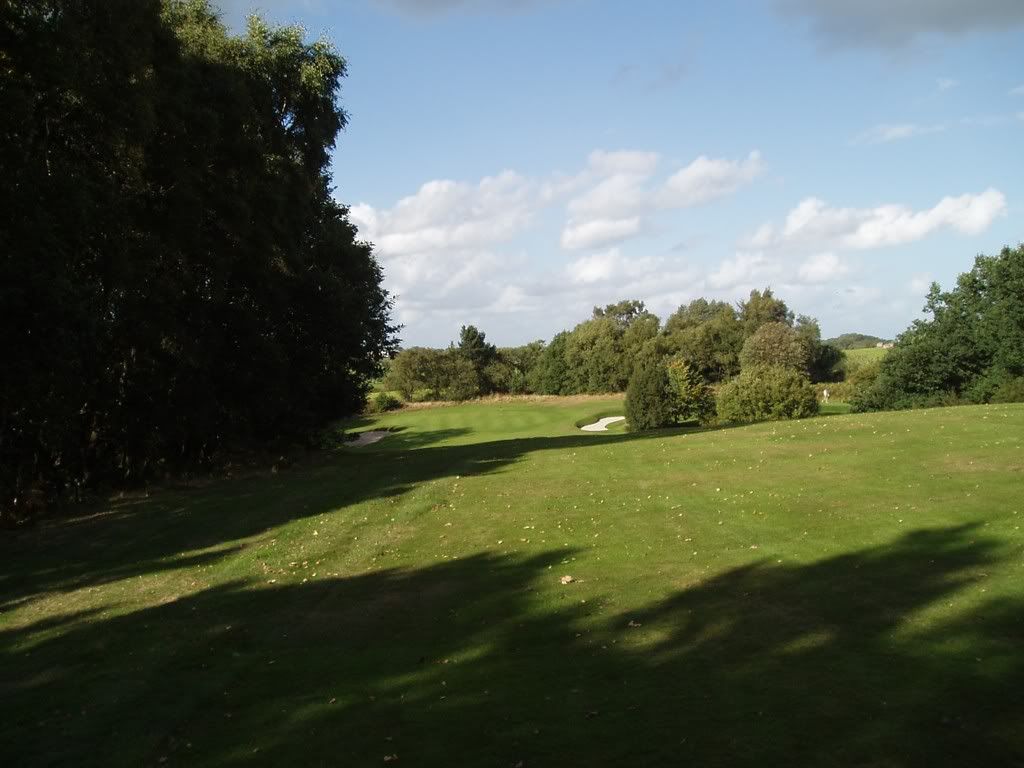
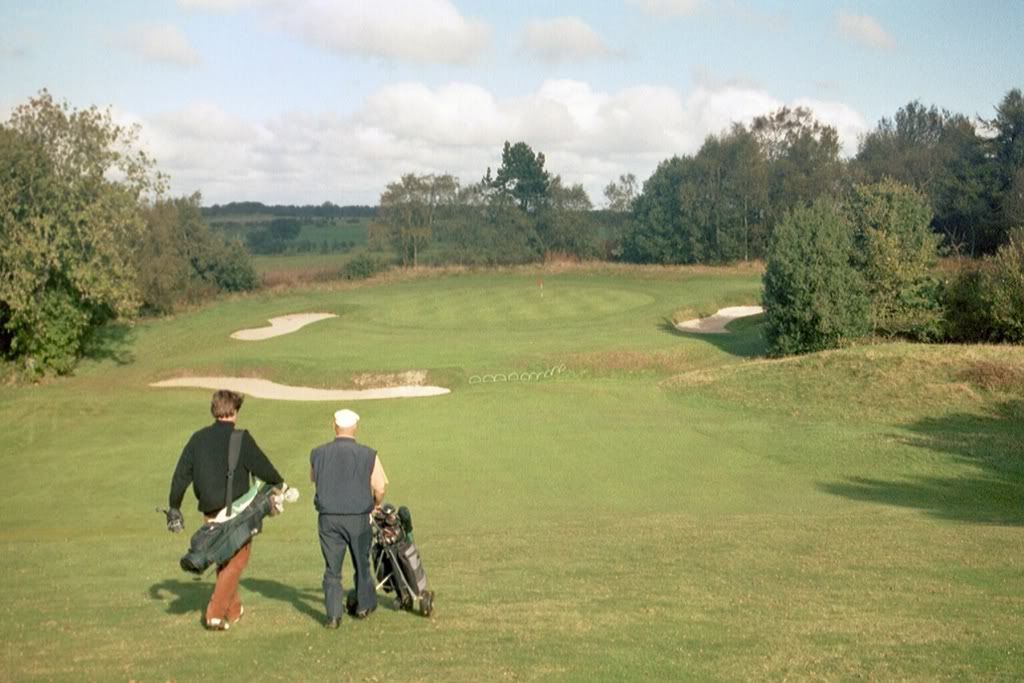
11. 167 yards par 3. One of Ben Crenshaw's favourite holes at TAGC. But is it a MacKenzie original? We simply don't know. On MacKenzie's map he indicated that if the land became available he would move the hole forward, still at about 150 yards' length, constructing a green in the style of Gibraltar (which he had recently built at Moortown). As originally played the tee was low, to the right, and forward of today's tees, level with the original green. From there it is possible to play a bump-and-run shot as there is no bunker on the direct line. That tee would be too dangerous today, with shots played to the modern 10th green, so from today's tees the shot has to clear a bunker, and there are huge slopes from back-to-front and right-to-left. This is, consequently, the only hole on the course which doesn't have a clear opening at the front. Our confusion over whether this hole was moved arises from two entries in the minutes recording that permission was given for the construction of a new 11th, but there is nothing to say that the work was ever carried out. The placement of today's bunkers is exactly the same as MacKenzie's original (see third photograph) although the style is different and the original was out in the open, with not a tree to be seen.
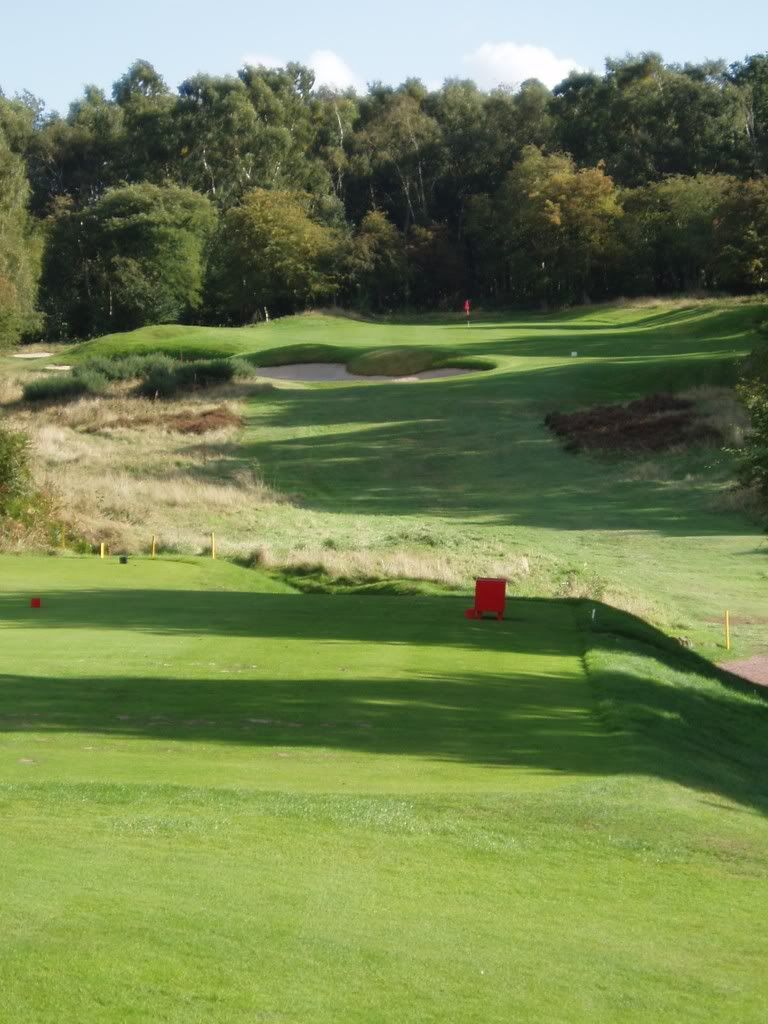

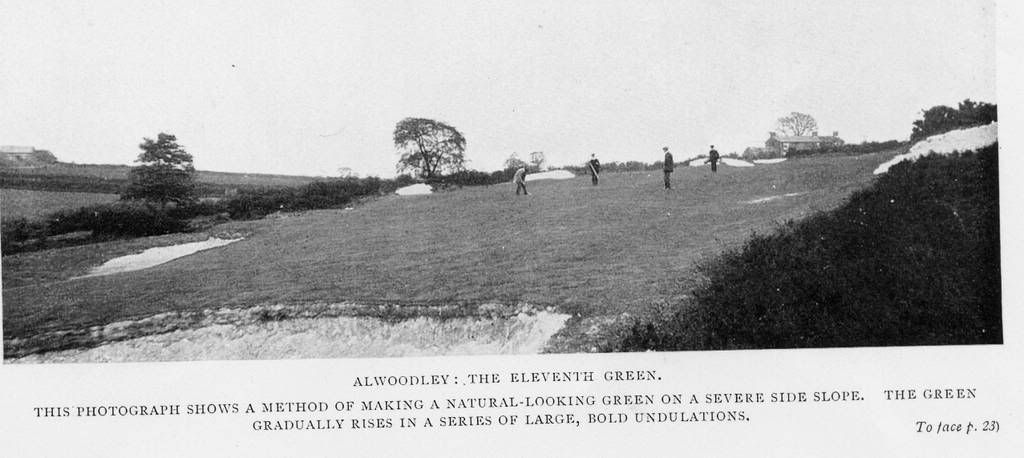
12. 365 yards par 4. Old photos show that this hole was originally treeless. The main concern was a topped shot into the abundant gorse in front of the tee. Today's good players, however, are playing for position for the second shot into the green.
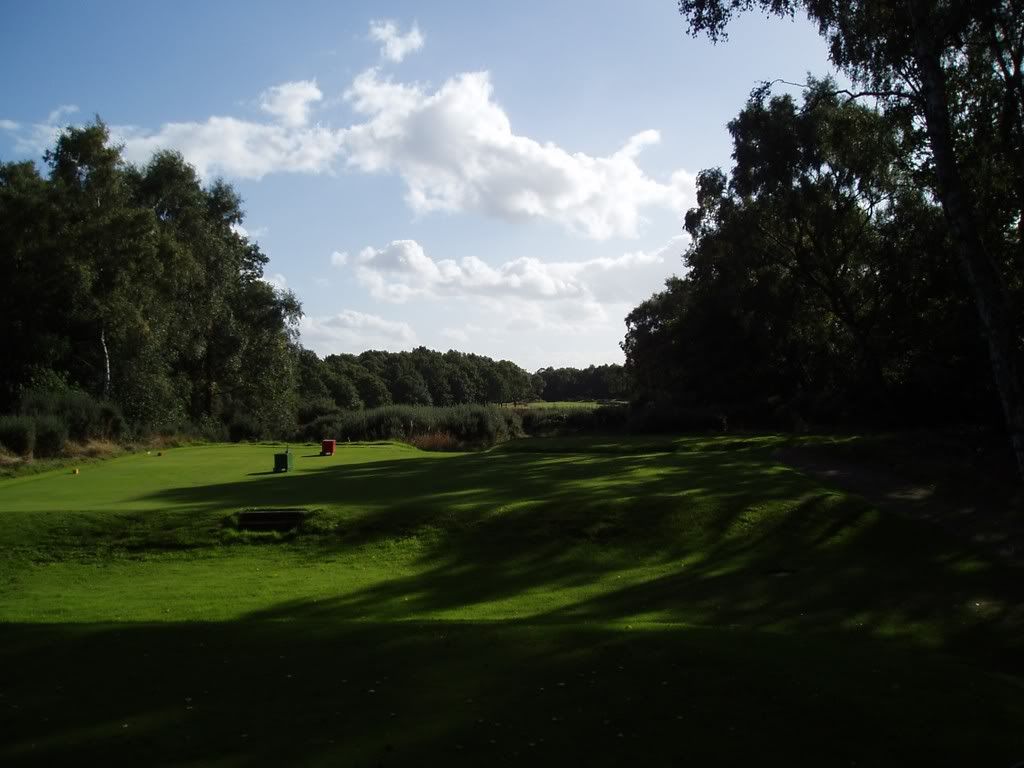
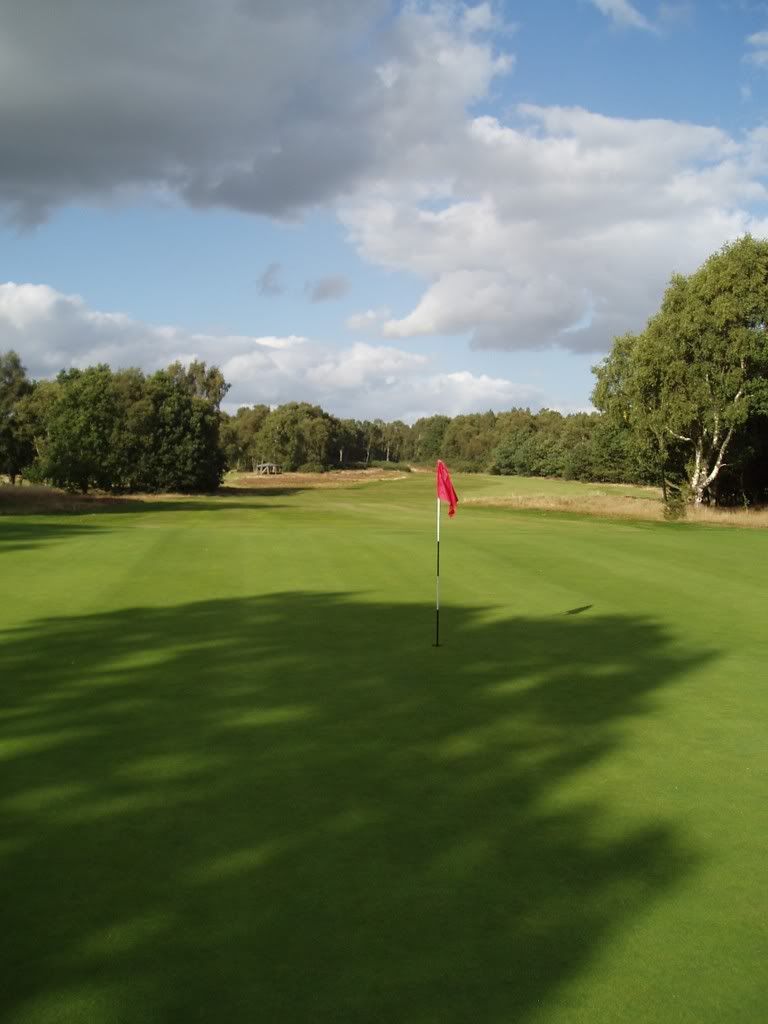
13. 402 yards par 4. The start of the run home into the wind, usually playing much longer than the indicated yardage. There are several deceptive borrows on this green, and pins tucked in behind the left-hand bunker can only be accessed from the right of the fairway.
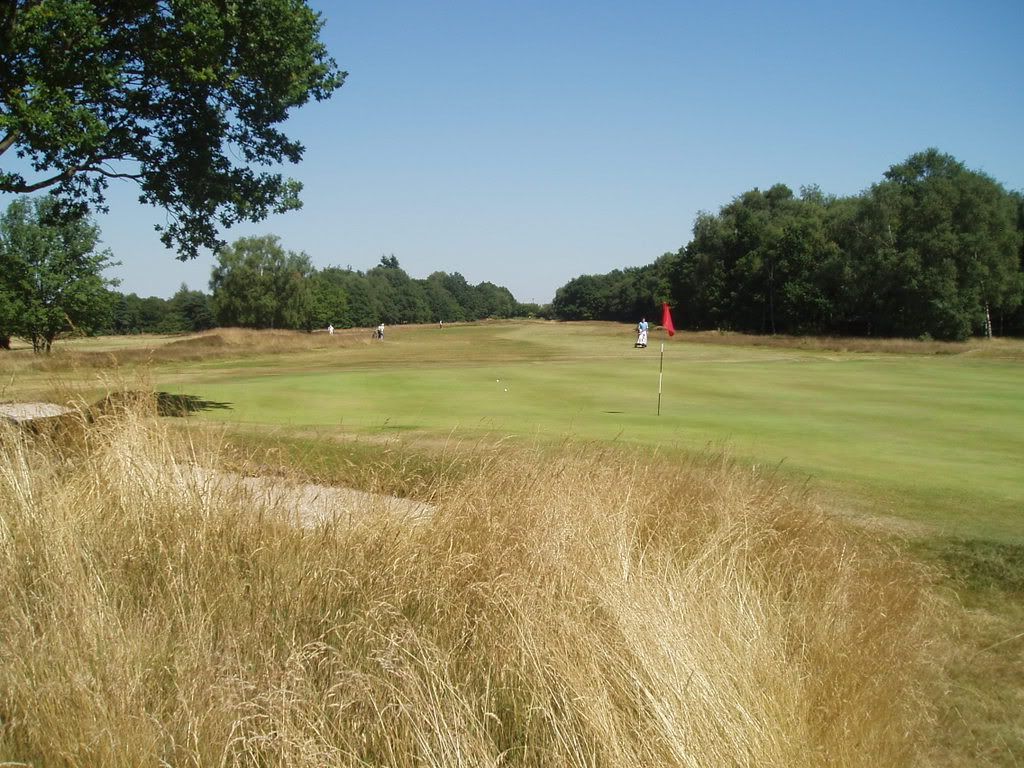
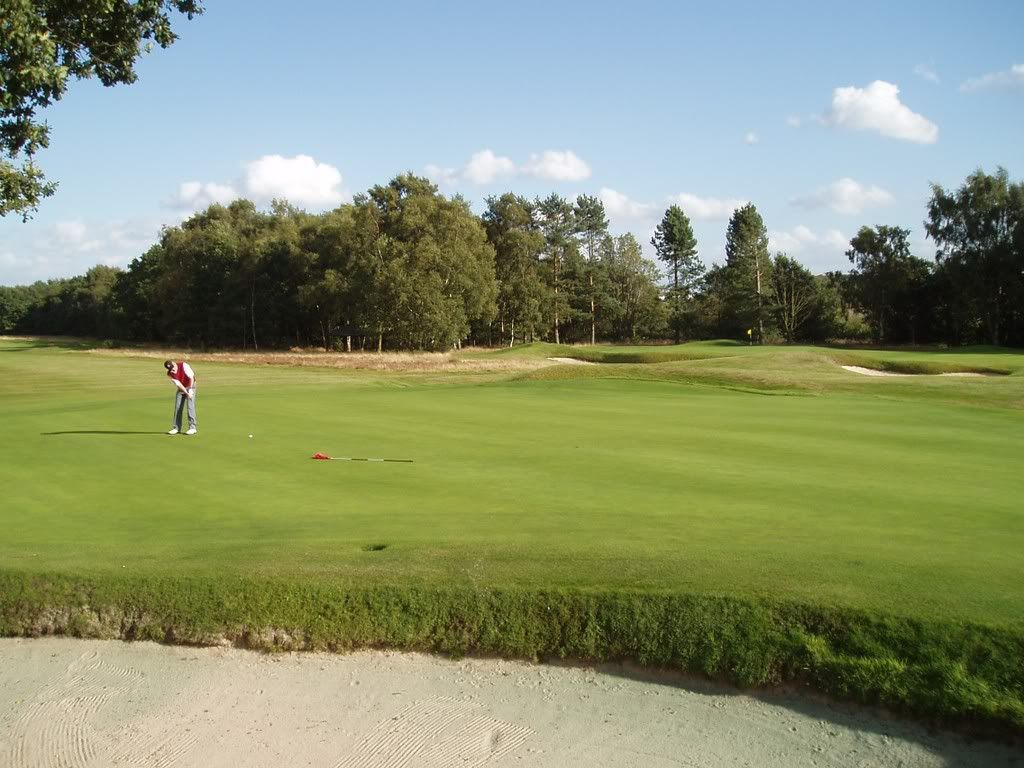
14. 206 yards par 3. A hefty par 3 usually played with a left-to-right wind, bringing the left-hand bunker into play, or running off the right side of the green. The domed nature of the green makes long putts difficult to pace. Originally, there was an OOB fence just through the back of the green, which then played to 154 yards.
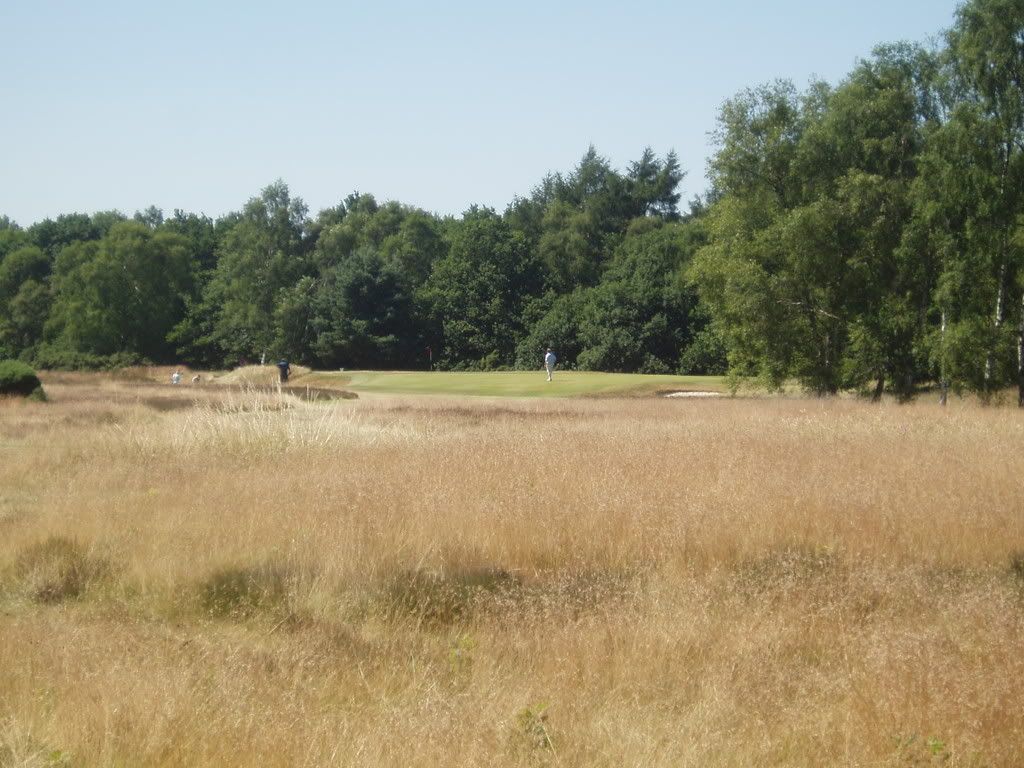
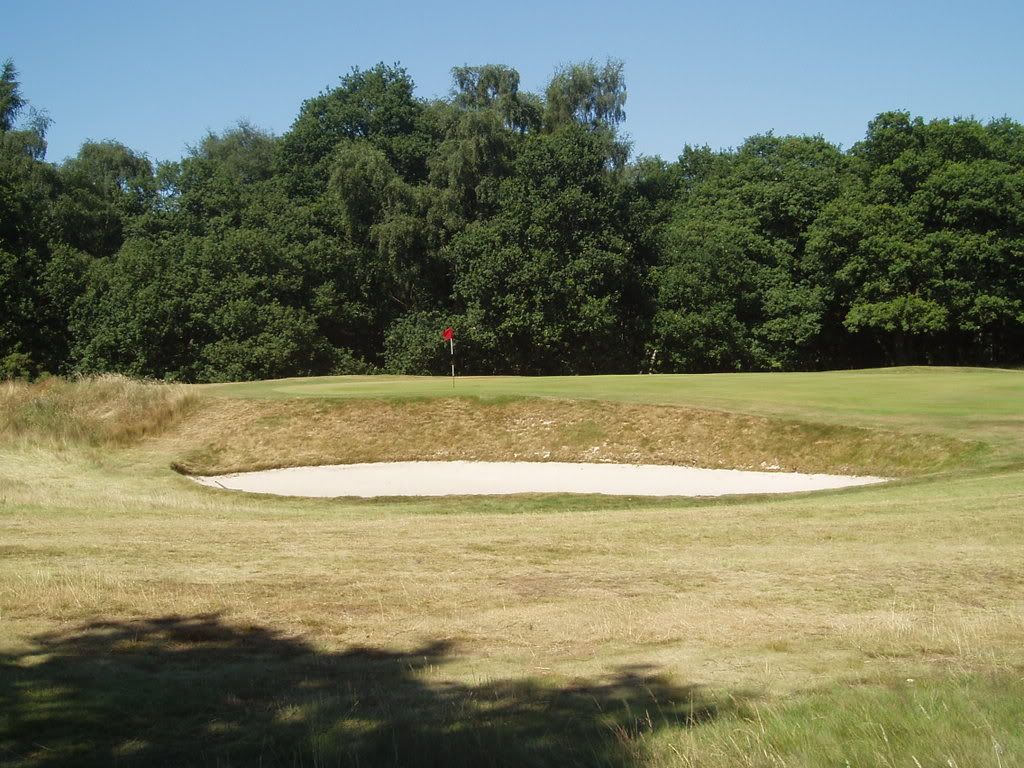
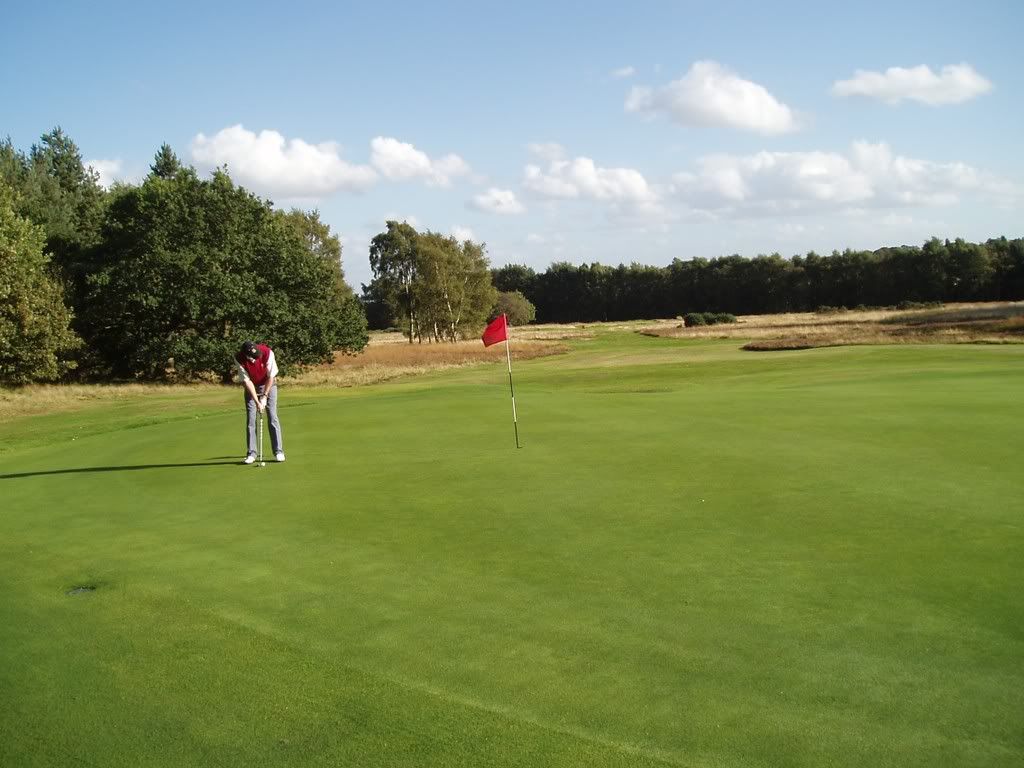
15. 409 yards par 4. A long dog-leg to the right on which accuracy from the tee is vital. The green has a steep slope up at the front and a depression towards the rear left. For a better picture and description see Ran Morrissett's profile in 'Courses by Country'. These young golfers are taking part in the 2007 Tillman Trophy, a top amateur tournament.
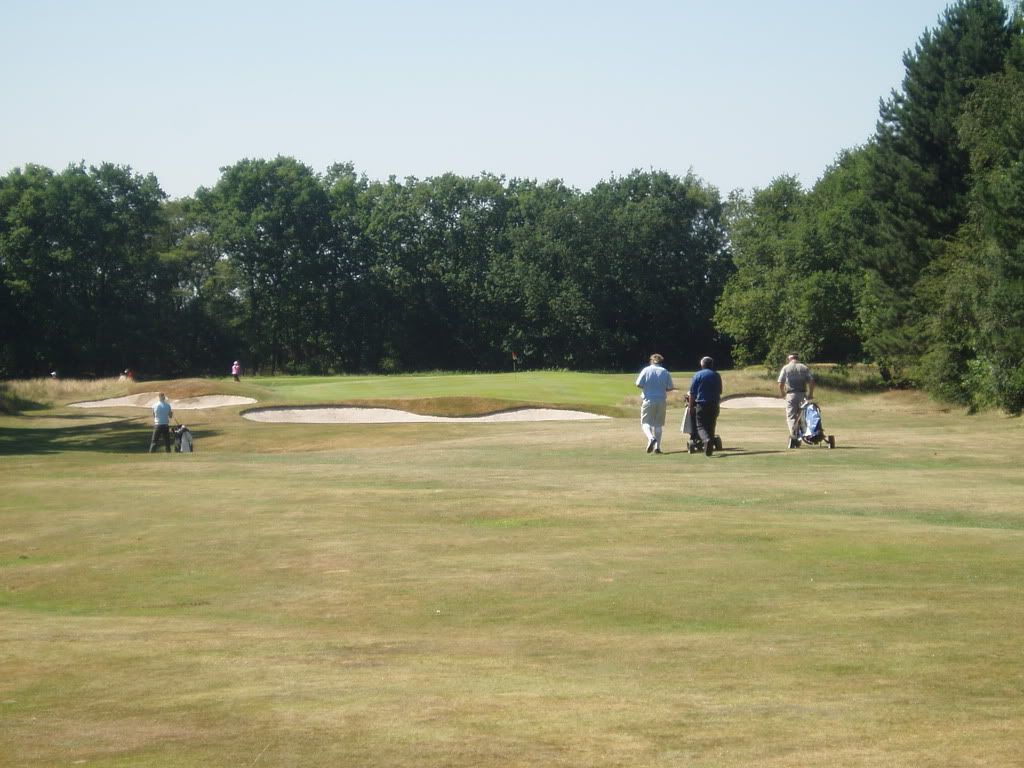
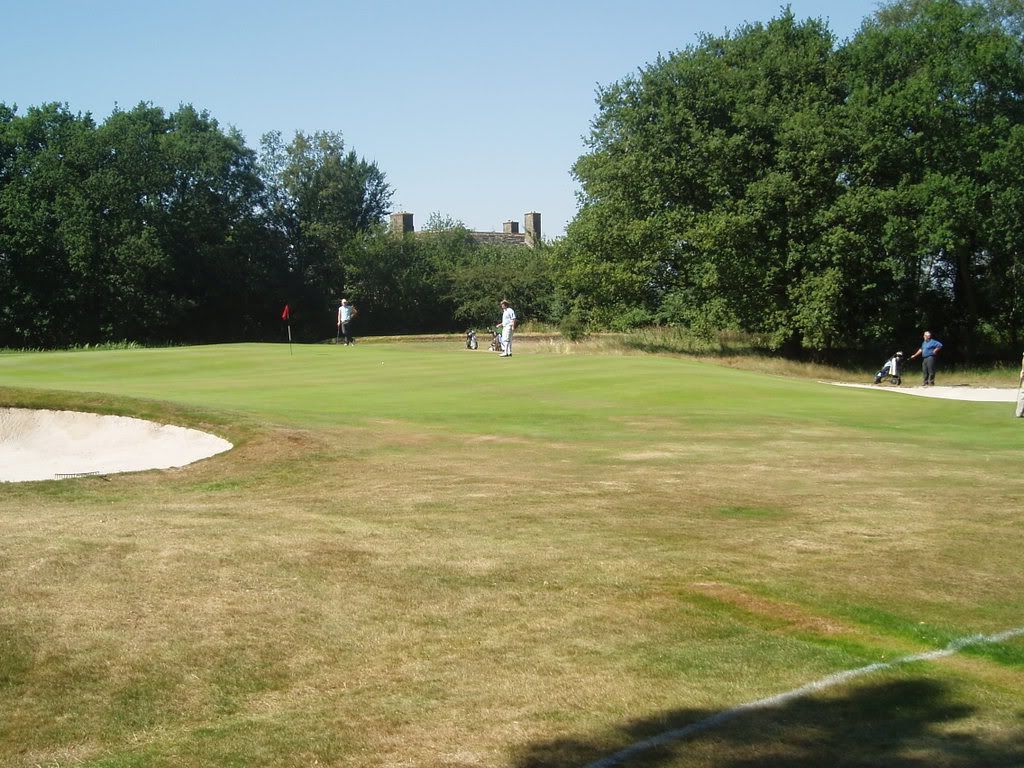
16. 414 yards par 4. Played across the wind (and the 3rd fairway) the drive is blind, over a pond and heathery ridge to a fairway curving from right to left. Big hitters may well hit the drive over the right-hand trees, allowing the wind to bring the ball back. The approach to the rising green is always a pleasure. There used to be a slight ridge running from side to side across the putting surface, but it is now more of gentle undulation.
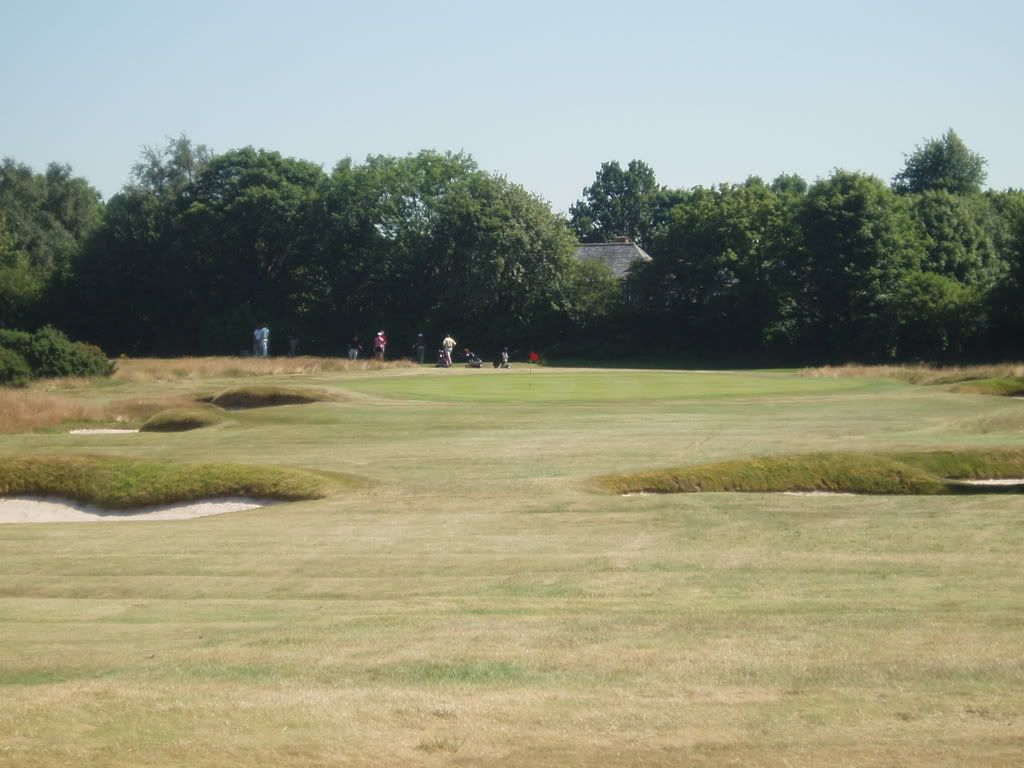

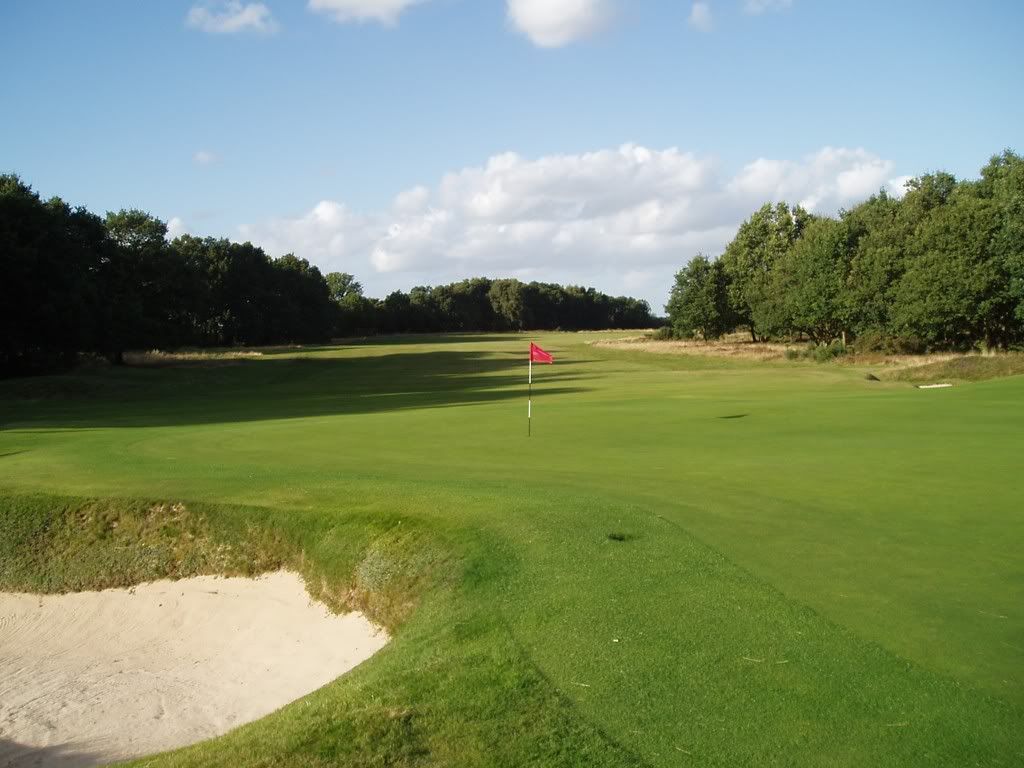
17. 434 yards par 4. A hole that is much easier for the bigger hitter, who can easily clear the right hand bunkers and take advantage of the wider fairway later in the hole, leaving a short approach down the hill to the green. For the rest of us that second shot is testing with dreadful trouble in the gorse on the hill and no marks for running through. Tillman Trophy competitors, again.
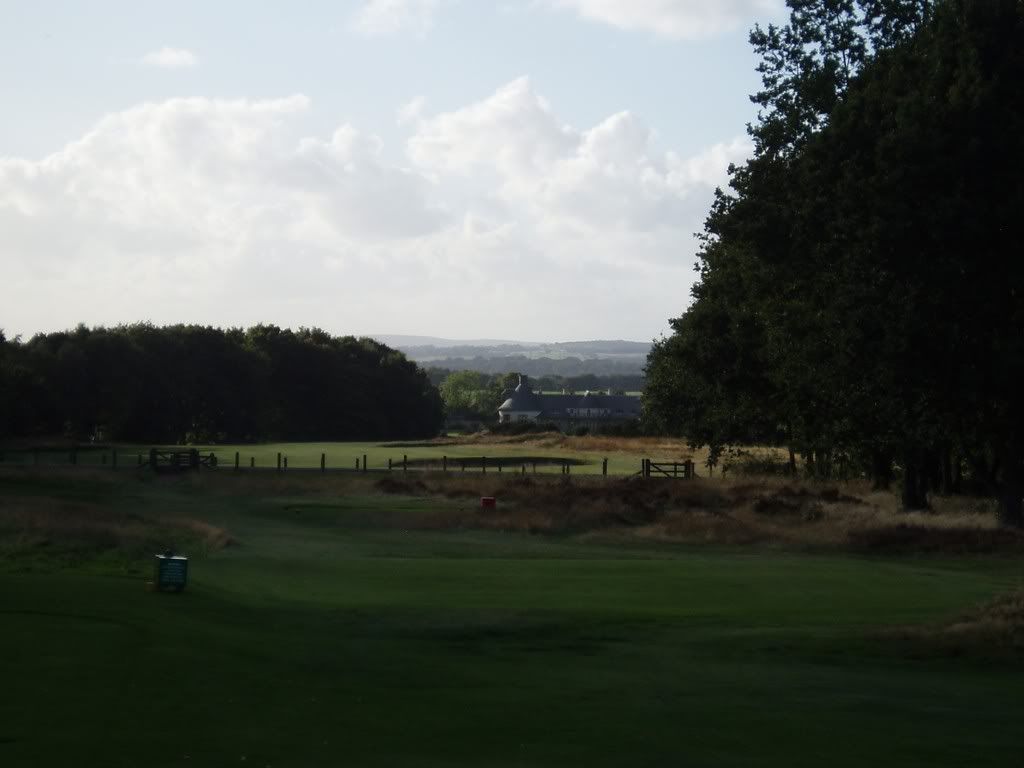

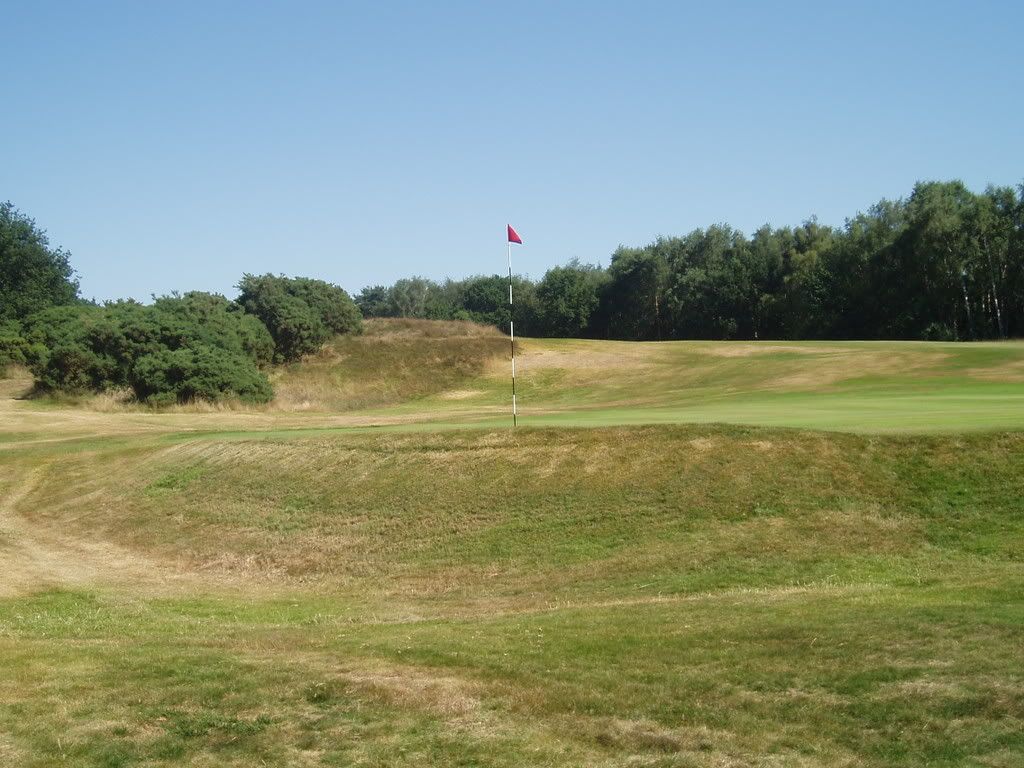
18. 470 yards par 4. Tough hole. 2nd picture is MacKenzie on the tee.
